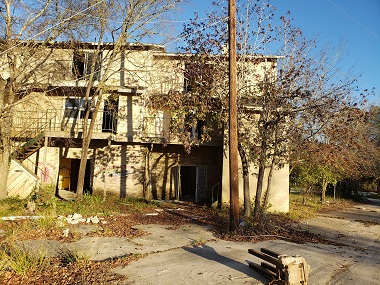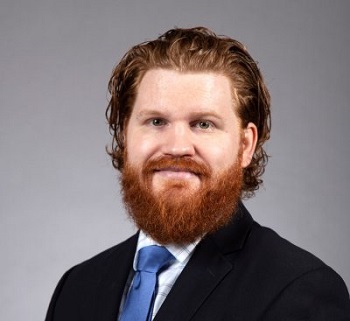Disaster Scientists Explore Hurricane Harvey Home Buyout Program
 |
|
One of the many complexes bought out in Harris County, Texas, following Hurricane Harvey. (Photo provided by Alex Greer) |
ALBANY, N.Y. (April 16, 2020) – Given the impacts of more frequent extreme weather on homeowners around the globe, state and local government agencies are turning to voluntary home buyout programs for relief.
The programs work by using federal funding to permanently relocate a large number of households away from areas at high risk of future damage from disasters. Although, in theory, this seems beneficial to all involved, it has been met with “mixed perception” – according to Alex Greer, an assistant professor in the College of Emergency Preparedness, Homeland Security and Cybersecurity (CEHC).
“Generally, homeowners are receptive to this [home buyouts] idea after a disaster, but lose interest as you get further away from the disaster event. Local and state governments tend to like the idea of reducing risk permanently but are sensitive to reducing the local tax base,” said Greer, who has researched these programs extensively.
“They wax and wane in popularity, but home buyouts will continue to be used, particularly in response to the effects of climate change.”
Mitigation vs. Recovery
As part of his ongoing research into these programs, Greer has noticed a trend. Government agencies generally design home buyouts as long-term disaster mitigation tools; homeowners view them as an opportunity for post-disaster recovery.
 |
|
CEHC Assistant Professor Alex Greer. |
As part of his ongoing research into these programs, Greer has noticed a trend. Government agencies generally design home buyouts as long-term disaster mitigation tools; homeowners view them as an opportunity for post-disaster recovery.
To gain more insight, Greer (along with a team of researchers) visited Harris County in Texas four times between November 2017 and December 2019. A few months prior to their initial visit, Hurricane Harvey devastated the region, dropping over 40 inches of rain in some areas and flooding an estimated 120,000 structures. Shortly after, the county expanded its existing home buyout program to purchase more properties at an accelerated rate.
“Given the magnitude of Hurricane Harvey and the history of buyouts in Harris County, it was an ideal setting to learn more about the design and implementation of buyout programs, particularly during the early stages when they are making key decisions on how to design and implement the expanded program,” Greer said.
Greer and his colleagues conducted a total of 20 semi-structured interviews with staff from the local implementing agency and key stakeholder agencies assisting with post-Harvey recovery. They also held informal conversations with program stakeholders, collected program documents, media reports and visited sites where buyouts had been implemented/were planned.
Their research overwhelming showed that buyout administrators were describing the program as a mitigation tool, protecting against costly future losses and fixing previous decisions that allowed people to build in unsafe areas.
Results were published in Disaster Prevention and Management: An International Journal.
“The discrepancy between mitigation and recovery matters,” Greer said. “Mitigation measures are typically deliberative and slow, allowing government agencies to consider, research, and prioritize projects. If treated as mitigation, but implemented post-disaster, participating homeowners often do not receive a buyout offer for a year or longer. This undermines the effectiveness of the program.”
“There’s still a number of questions related to buyouts that we should be working to address. Practically everyone I have spoken to agrees among the biggest barriers to implementing buyouts is the time it takes to acquire funding,” he added.
Greer and his team plan to continue visiting Harris County periodically to keep up with changes in their program. He’s also establishing connections with residents and community groups to learn more about their experience.
The team also includes Sherri Brokopp Binder, BrokoppBinder Research & Consulting and Elyse Zavar, University of North Texas.
![]() For more news, subscribe to UAlbany's RSS headline feeds
For more news, subscribe to UAlbany's RSS headline feeds
A comprehensive public research university, the University at Albany-SUNY offers more than 120 undergraduate majors and minors and 125 master's, doctoral and graduate certificate programs. UAlbany is a leader among all New York State colleges and universities in such diverse fields as atmospheric and environmental sciences, business, education, public health,health sciences, criminal justice, emergency preparedness, engineering and applied sciences, informatics, public administration, social welfare and sociology, taught by an extensive roster of faculty experts. It also offers expanded academic and research opportunities for students through an affiliation with Albany Law School. With a curriculum enhanced by 600 study-abroad opportunities, UAlbany launches great careers.


